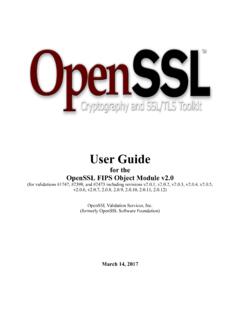Transcription of User’s Guide for the amsmath Package (Version 2.1)
1 user s Guide for theamsmathPackage (Version )American Mathematical Society, LATEX Project1999-12-13(revised 2002-02-25, 2016-11-14, 2018-04-05, 2019-10-14,2020-02-18)This file is maintained by the LATEX Project reports can be opened (categoryamslatex) Introduction12 Options for theamsmathpackage23 Displayed Introduction .. Single equations .. Split equations without alignment .. Split equations with alignment .. Equation groups without alignment .. Equation groups with mutual alignment .. Alignment building blocks .. Adjusting tag placement .. Vertical spacing and page breaks in multiline displays .. Interrupting a display .. Equation numbering .. 114 Miscellaneous mathematical Matrices .. Math spacing commands .. Dots .. Nonbreaking dashes .. Accents in math .. Roots.
2 Boxed formulas .. Over and under arrows .. Extensible arrows .. Affixing symbols to other symbols .. Fractions and related constructions .. Continued fractions .. Smash options .. Delimiters .. 175 Operator Defining new operator names .. \modand its relatives .. 206 The\textcommand20 CONTENTSiii7 Integrals and Multiline subscripts and superscripts .. The\sidesetcommand .. Placement of subscripts and limits .. Multiple integral signs .. 228 Commutative diagrams239 Using math Introduction .. Recommended use of math font commands .. Bold math symbols .. Italic Greek letters .. 2510 Error messages and output General remarks .. Error messages .. Warning messages .. Wrong output .. 3211 Additional Compatibility with other packages .
3 Converting existing documents .. Technical notes .. Getting help .. Of possible interest .. 34 References35 Index361 1 IntroductionTheamsmathpackage is a LATEX Package that provides miscellaneous enhance-ments for improving the information structure and printed output of documentsthat contain mathematical formulas. Readers unfamiliar with LATEX should re-fer to [3]. If you have an up-to-date version of LATEX, theamsmathpackage isnormally provided along with it. Upgrading when a newer version of theams-mathpackage is released can be done documentation describes the features of theamsmathpackage and dis-cusses how they are intended to be used. It also covers some ancillary packages :amsbsy amsopn amsxtraamscd amstextThese all have something to do with the contents of math formulas. Forinformation on extra math symbols and math fonts, see [8] For documentation of theamsthmpack-age or AMS document classes (amsart,amsbook, etc.)
4 See [9] or [7] you are a long-time LATEX user and have lots of mathematics in what youwrite, then you may recognize solutions for some familiar problems in this listofamsmathfeatures: A convenient way to define new operator name commands analogous to\sinand\lim, including proper side spacing and automatic selection ofthe correct font style and size (even when used in sub- or superscripts). Multiple substitutes for theeqnarrayenvironment to make various kindsof equation arrangements easier to write. Equation numbers automatically adjust up or down to avoid overprintingon the equation contents (unlikeeqnarray). Spacing around equals signs matches the normal spacing in theequationenvironment (unlikeeqnarray). A way to produce multiline subscripts as are often used with summationor product symbols. An easy way to substitute a variant equation number for a given equationinstead of the automatically supplied number.
5 An easy way to produce subordinate equation numbers of the form ( )( ) ( ) for selected groups of is distributed together with some small auxiliary pack-ages:amsmathPrimary Package , provides various features for displayed equationsand other mathematical OPTIONS FOR THEAMSMATHPACKAGE amstextProvides a\textcommand for typesetting a fragment of text insidea \DeclareMathOperatorfor defining new operator names like\sinand\ backward compatibility this Package continues to exist but use ofthe newerbmpackage that comes with LATEX is recommended aCDenvironment for simple commutative diagrams (no supportfor diagonal arrows).amsxtraProvides certain odds and ends such as\fracwithdelimsand\ac-centedsymbol, for compatibility with documents created using incorporatesamstext,amsopn, andamsbsy. The fea-tures ofamscdandamsxtra, however, are available only by invoking thosepackages independentmathtoolspackage [10] provides some enhancements toamsmath;mathtoolsloadsamsmathautomatic ally, so there is no need to sep-arately loadamsmathifmathtoolsis used.
6 Somemathtoolsfacilities will benoted below as appropriate. 2 Options for theamsmathpackageTheamsmathpackage has the following options:centertags(default) For an equation containing asplitenvironment, placeequation numbers vertically centered on the total height of the Top-or-bottom tags : For an equation containing asplitenvironment,place equation numbers level with the last (resp. first) line, if numbers areon the right (resp. left).sumlimits(default) Place the subscripts and superscripts of summation sym-bols above and below, in displayed equations. This option also affectsother symbols of the same type Q,`,N,L, and so forth but exclud-ing integrals (see below).nosumlimitsAlways place the subscripts and superscripts of summation-typesymbols to the side, even in displayed , but for integral (default) Opposite (default) Likesumlimits, but for certain operator names such asdet, inf, lim, max, min, that traditionally have subscripts placed under-neath when they occur in a displayed INTRODUCTION3alignedleftspaceyesalignedl eftspacenoalignedleftspaceyesifnegTo use one of these Package options, put the option name in the optional ar-gument of the\usepackagecommand ,\usepackage[intlimits]{ amsmath }.
7 For AMS document classes and any other classes that preloadamsmathdesiredoptions must be specified with the\documentclass ,\documentclass[intlimits,tbtags,reqno]{ amsart}.Theamsmathpackage also recognizes the following options which are nor-mally selected (implicitly or explicitly) through the\documentclasscommand,and thus need not be repeated in the option list of the\usepackage{ amsmath } equation numbers on the equation numbers on the equations at a fixed indent from the left margin rather thancentered in the text options have been added to control the space to the left ofalignedandgatheredenvironments. Prior to the 2017 release a thin space was addedto the left but not the right of these constructs. This appears to have been anaccidental feature of the implementation and was typically corrected by prefixingthe environments with\!.The new default behavior is aimed to ensure that the environments do nothave a thin space added in most cases, and that existing documents using\!
8 \begin{aligned}continue to work as add\,to the left add\,to the left add\,if the environment is prefixed bynegative space. (New default behavior.) 3 Displayed IntroductionTheamsmathpackage provides a number of additional displayed equation struc-tures beyond the ones provided in basic LATEX. The augmented set includes:equation equation* align align*gather gather* alignat alignat*multline multline* flalign flalign*split43. DISPLAYED EQUATIONS(Although the standardeqnarrayenvironment remains available, it is better tousealignorequation+splitinstead. Withineqnarray, spacing around signsof relation is not the preferred mathematical spacing, and is inconsistent withthat spacing as it appears in other environments. Long lines in this environmentmay result in misplaced or overprinted equation numbers. This environment alsodoes not support the use of\qedor\qedhereas provided by theorem packages .)
9 Except forsplit, each environment has both starred and unstarred forms,where the unstarred forms have automatic numbering using LATEX sequationcounter. You can suppress the number on any particular line by putting\notagbefore the end of that line;\notagshould not be used outside a display environ-ment as it will mess up the numbering. You can also override a number with atag of your own using\tag{ label }, where label means arbitrary text such as$*$oriiused to number the equation. A tag can reference a different taggeddisplay by use of\tag{\ref{ label } modifier }where modifier is you are usinghyperref, use\ref*; use of the starred form of\refprevents areference to a modified tag containing a nested link from linking to the is also a\tag*command that causes the text you supply to be typesetliterally, without adding parentheses around it.\tagand\tag*can also be usedwithin the unnumbered versions of all theamsmathalignment structures.
10 Someexamples of the use of\tagmay be found in the sample with is a special subordinate form that is used onlyinsideone of the others. It cannot be used insidemultline, one alignment (&) column; if more are needed,alignedoralignedatshould be used. The width of asplitstructure is the full line the structures that do alignment (split,alignand variants), relationsymbols have an&before them but not after unlikeeqnarray. Putting the&after the relation symbol will interfere with the normal spacing; it has to all multiline environments, lines are divided by\\. The\\shouldnotbeused to end the last line. Using it there will result in unwanted extra verticalspace following the environments (inline or display), blank lines (equivalent to\par)are not permitted, and will result in an Single equationsTheequationenvironment is for a single equation with an automatically gen-erated number.
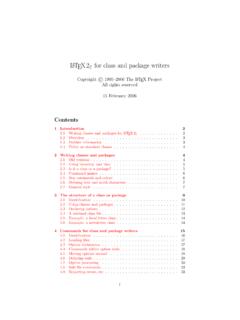
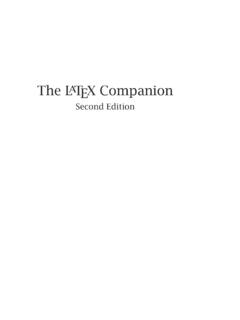

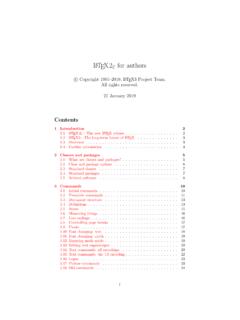
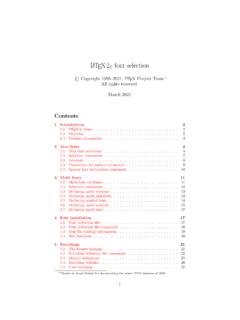

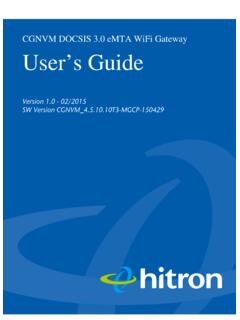
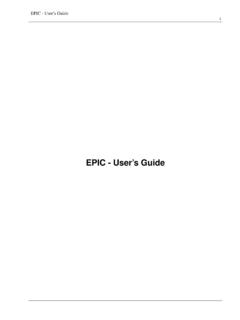
![[U] User's Guide - Stata](/cache/preview/7/7/5/3/e/3/b/2/thumb-7753e3b2038b263eb367b7bfd142f64f.jpg)

